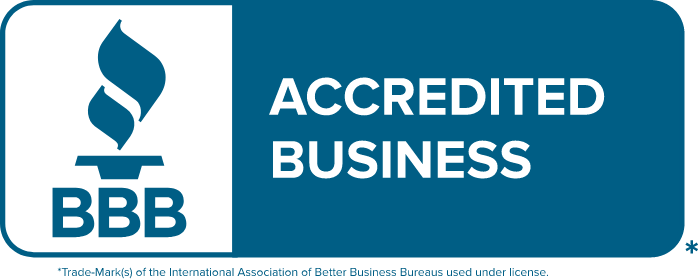When you have determined your target, you know how to optimize your content and you have good ideas for your content, it’s a good start! Now, place to SEO optimization.
There will be no need to take all the tools out of the garage for that. However, reviewing its basics in HTML language can be useful.
Optimize Your Content By Placing your main keyword?
Let’s start by taking a closer look at the main keyword. This will be the real “star” of your web page.
It must first be placed in your title <H1> (main) and in at least one title <H2> (subtitle). These tags are very important for Google.
Your keyword should also be in the <title> tag (“meta title”). As the name suggests, the latter corresponds to the title of your web page.
Arrange to put your keyword in the Meta description! This is the description of your page that appears under the Title tag in Google results. It informs users about the content of the page.
Be subtle and form grammatically correct sentences (no one like spammers).
That’s not all, consider completing the alt-tag. Indeed, the alt tag of an image is taken into account by Google.
It allows the search engine to analyze the content of the image. So enter your main keyword in the alt tag of your image for SEO optimization in good standing! Be specific and descriptive.
Finally, it is always useful to place the keyword in the URL! Admittedly, many will say that this is no longer a determining Google positioning criterion and that URLs have much less weight than before in SEO, but why not use it? Much to put the odds on your side to reach pole position.
How to amplify its semantic cocoon thanks to the LSI Keywords?
To build a semantic cocoon, it is necessary to produce quality editorial content on a theme (search for keywords, lexical field) and optimize its internal mesh (link the different pages that deal with the same subject).
One way to amplify your lexical field is to use the LSI Keywords (LSI: Latent Semantic Indexing) in your article. You will show our friend Google that you cover the whole subject and that your page is the reference in the field.
So how do I amplify the lexical field of my article?
With Google Autosuggest (or YouTube Autosuggest), simply type the main keyword of your page in the search bar and locate the first keywords that are automatically suggested to you, as users often do this research.
Your startups and understandings the goals for your customers:
With a tool like Ahrefs, click on the “Site Explorer” tab (at the very top), copy and paste the URL of your page and then click on “Organic Keyword” in the left column.
This will give your access to a list of keywords related to your subject. Include the most relevant results in your article. Among the other tools available, you can also use: BuzzSumo, Answer the Public, Keyword tool, LSI keywords.
Use a powerful tool the Google search console
You have certainly already taken a look at the famous Google Search Console! Always looking for LSI Keywords to expand your lexical field:
- Enter the URL of your page in the console settings.
- Add the query keywords to your article.
- Think about studying competition to boost your semantic cocoon.
Once again, you can use Ahrefs to find the keywords used by competing articles. To do this, enter your competitor’s URL in “site explorer”. Then click on “Content Gap” in the left column, then “show keywords”.
You will see the keywords of your competitors that generate traffic that you do not have in your article.
Optimize Your Titles Content
Another point is not to neglect titles. As we have already pointed out, H1 tags play an important role in SEO.
How do you optimize your titles (H1)?
The Russian Doll Technique. Use medium-lag keywords (3 or 4-word group) that incorporate short-tail keywords (including your main keyword).
For example, the Main keyword is “natural referencing”.
This technique gives you the opportunity to position yourself on a competitive keyword (with a large volume of searches) while allowing you to appear on keywords less competitive (less sought) that will nevertheless bring you traffic!
Put your keyword at the very beginning of your title! Google will surely understand the keyword you are positioning on.
Your title must appear in full (about 55 characters)! Its size depends on the characters used. Use a preview tool such as Yoast SEO to be sure your title is not truncated. In fact, a cut title tends to reduce your click-through rate (CTR).
In the following example, you can see the title is fully displayed:

Remember to add an odd number to your title (H1), this can have a positive impact on your conversion rate.
Your title must also contain “content accelerators”. You do not know what it is? No problem, I have concocted a little paragraph on the subject especially for you.
Content Accelerator Technique
Did you take a day off to see the latest Avengers just after watching the trailer? So you understand the principle of teasing! Feel free to apply it to your titles and description using the Content Accelerator technique.
To put it simply, these are words that catch the reader’s attention and drive him to action: “better”, “guide”, “top”, “this year”, “now”, “easy”, “fast”, “How…”
You can place them:
- In a Title Meta.
- In a Meta description.
- In a title <H1>.
Example: SEO, the ultimate guide to the best SEO techniques 2020.
Avoid the bounce rate
So no, sorry to disappoint you. The “bounce rate” is not a tube of reggaeton. It’s just the bounce rate. This indicator measures the percentage of people who have visited your web page and left your site, without surfing the other pages.
For Google, a high bounce rate may mean that your visitors are dissatisfied, which is likely to drop your site in the search results!
How to cure it?
Replace “published on” with “last modified” next to the date of publication of your article. This can have more impact on users, always looking for new content! Remember they are more likely to click on a trendy item.
Add visuals (photos, videos, and gifs) to capture the reader’s immediate attention and not scare him with a long, laborious text frame to read.
Work on the “link baiting”, nothing like original visual content to be the target of external links: so yes, the infographics work very well, but have you tried the gifographies (a mix between computer graphics and animated gif) and mapographies (visual in the form of a map)?
Old content and natural referencing: The role of the update
The MAJ (for the intimate) is to make changes to an old article to refresh your blog without getting into the creation of new content.
This allows you to save time, update articles that are no longer relevant, and do not let your old articles slowly sink into the bottom of your blog SEO friendly.
In addition, do not forget that users are fond of recent content.
Not only do you have the chance to give a second life to an article that is important to you, but you can also better optimize the content of the latter now that you have more knowledge in SEO.
And then, you can imagine that an article on SEO written in 2009 is not very valid today.
Here you have all the keys to optimize your content! We will now be able to promote the latter.
The golden rule often evoked by SEO experts: Content and content promotion.
Content promotion through backlinking
Once you have written and optimized your content, go to the promotion! And at this level, it is not only Spiderman who performs feats by weaving links. Have you ever been told how important backlinking is?
Welder’s technique, restore broken links!
Have you ever seen an article and found a 404 error by clicking on a link? Thanks to the welder’s technique, you will finally be able to take your revenge and use these broken links to your advantage.
How to do? It is very simple. Just install the Check My links extension.
Activate it when you surf on a page or an article dealing with your theme. This will allow you to find all the broken links.
Send the information to the owner of the site or blog in question, then contact him to propose your content instead of a defective link.
Join a quality resource page
Another technique that has been proven: join a quality resource page. For this, the first step is to create a very qualitative article.
Do you have one? Very good, look now for existing resource pages related to your domain. Once is not customary, you just have to contact the webmasters to offer to add your link.
The technique of content extension

The least we can say is that the technique of content extension is extremely effective. It allows you to bring your stone to the building, to gently put the icing on the cake.
In concrete terms, you will be looking for an article that is already very qualitative and well referenced. Your goal will be to complete the latter by proposing either:
1. An infographic to schematize the article in a fun way.
2. A video to illustrate a specific point.
3. An additional image to extend or detail the article.
4. A podcast to make the article accessible and quick to understand.
You will add value to the existing article! Include a link that points to your site to get a quality backlink and more!
Keep an eye on the backlinks of the competition
Natural search standby mode activated! Always stay on the lookout for backlinks of your competing articles and get backlinks too! If you think your article is better, do not hesitate to let it know.
How to do it?
- In Google, do a search on the topic. Analyze the first 5 results!
- Then use Ahrefs (yes, still him). Click on the “site explorer” tab and type the name of the blog you have selected. To review the “backlinks”, all you have to do is click on “incoming links” in the left column.
Where did the links come from? Contact the blogs that generated these links and show them that your article is more complete or more qualitative! Here is a small example of an email to facilitate your contact:
Of course, you are free to arrange this mail in your own way!
SEO is a very competitive field, so be competitive and rank among your competitors!
Same principle, analyze the backlinks of your competitors. But this time, focus on the sources that backlink many of your competitors! You will have even more chances to get a link, there is no reason that you are not in the game.
It’s time to use the link intersection tool.
Also in Ahrefs, click on the “More” tab (top right), then “Intersection of links”. Also, list two or three competitors and enter their URL. This will allow you to find who the backlink is.
Certainly, we insist a lot on the editorial content. But this is not a reason to forget the visuals. Images and videos can also be effective media for getting links.
As we said before, a single text block is not enough to hook the reader. Only a small problem, all the visuals that you find are not necessarily usable (the question of intellectual property).
Editors and other content managers are therefore often looking for visuals free of rights to illustrate their articles.
To meet this demand, simply design a simple and useful visual content that you make available to other users. Locate sites that use your visuals through a search in Google Image and contact webmasters to ask them to add your link.


